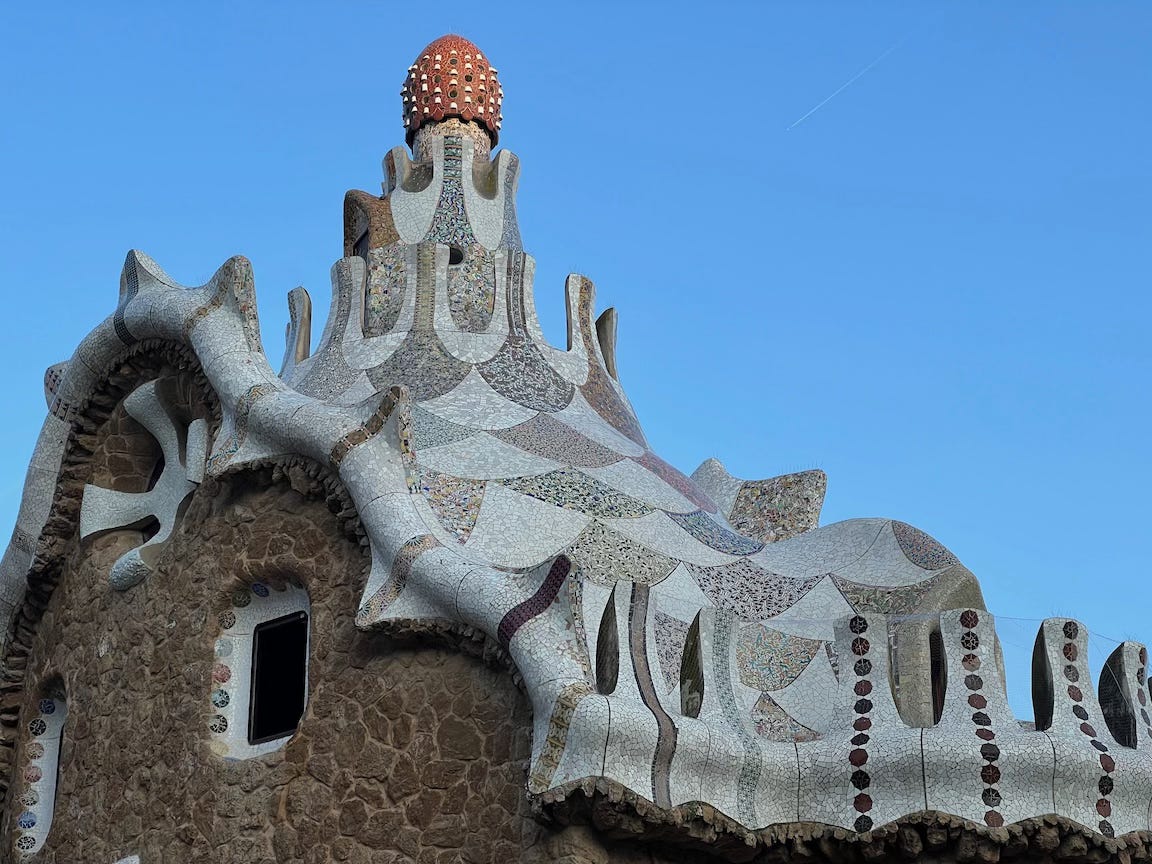Earlier reflections from this three week trip through southern Spain are here.
Early one dark and rainy evening on our last night in Barcelona, we wandered into a Catholic church that was different, totally different, from any church I had ever seen. We had seen so much gold and glory in the cathedrals and palaces on this trip, and this one had little of it. The glitz and glam are gorgeous, but they do not invite a person in—at least not me. This church, however, was inviting. The holy family—forgive my language—looked fully human. This did not reduce them, but enhanced them.
Not too far away is Güell Park, liberally sprinkled with Gaudí buildings. Antoni Gaudí (1852 – 1926), famed Catalan architect, is most renowned for the still-in-process Sagrada Familia, an elaborate cathedral built in homage to the holy family.
The structures in the park are, like that Catholic church, more down to earth. In a way. They also feel like fantasies made real with clay and glass, iron and stone.
Far, far to the West is Cádiz, a sun drenched town that sits on a peninsula out beyond where it seems there should be any land at all, poking out into the Atlantic. There are several castles, two of which are at the ends of spits of land which are now connected, but were separated by water when the castles were built. At what is now the Castillo de San Sebastian, a Venetian boat arrived in the 15th century with a crew afflicted with the plague. With permission, they made landfall, recovered, and built a chapel, which over the centuries morphed into a castle, a first defense against enemies arriving by sea.
Now, Cádiz is free of plague, and Venetian boats do not make landfall there anymore. Now, Cádiz feels like the land of cranes. Here is one at sunrise, with a statue of Simon Bolivar at the bottom of the photo. What you cannot see here is the (unfortunate) placard below the statue: Simon Bolivar: Heroe de la Raza (hero of the race).







